Technical analysis of McLaren MCL34: prepared to give battle

McLaren has chosen this day February 14 to present its McLaren MCL34 with Renault engine, the car for the F1 2019 . A single-seater that will be the weapon that Carlos Sainz and Lando Norris will have to fight this season, because this year they will give it once the problems of the past year have been corrected that they harassed the whole season and they dedicated it to understand what happened to the car to Do not fall into the same problem again this year. You still have to be cautious, but if the problems have been solved, the thing looks good ...
We also see the new decoration of the team, with the orange renewed and a little more presence of blue, with some new sponsors. One of them is very important, which is a great injection of money for the team. This is another tobacco company, as in the case of Ferrari with Malboro, this time it is the return to F1 of another mara that was in the past and became very famous: BAT (British American Tobacco), but as you know, this type of advertising of cigarettes is prohibited, so the agreement will focus on technological aspects and not on this product that harms both the health ...
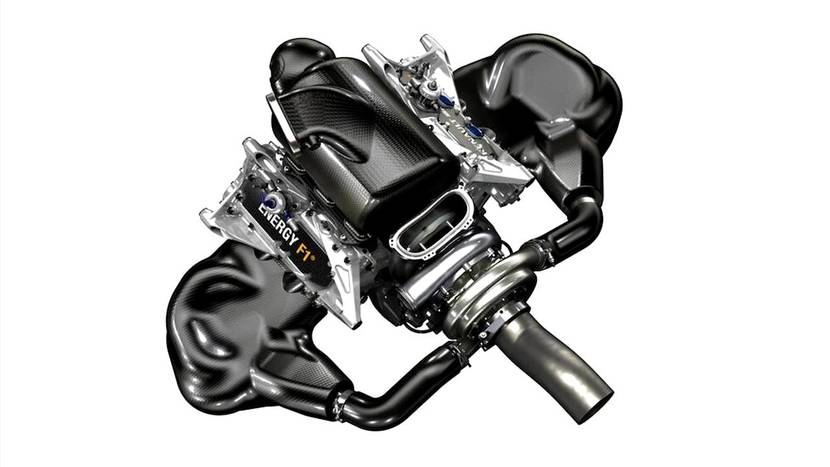
The Renault engine has a lot to say in that battle that McLaren is going to plant, I've already been saying that the declarations of Renault and Honda have been influenced by the wounded pride of both for the movements that have happened, but that we would have to take the statements with care. However, now the British BBC seems to have accessed information close to the French team of the diamond and it is rumored that they have been able to make a big performance jump this winter.
If those speculations are real, the propeller could have gained 35KW of power in classification with a new map for these sessions as they already had Ferrari and Mercedes, and about 20KW in the race. That's an equivalent of 46CV for extra classification and 27CV for extra race with respect to what they had in the past year. Recall that they have redesigned the architecture or structure of the engine because they saw that SPEC 3 did not give them what they wanted and could not continue to evolve.
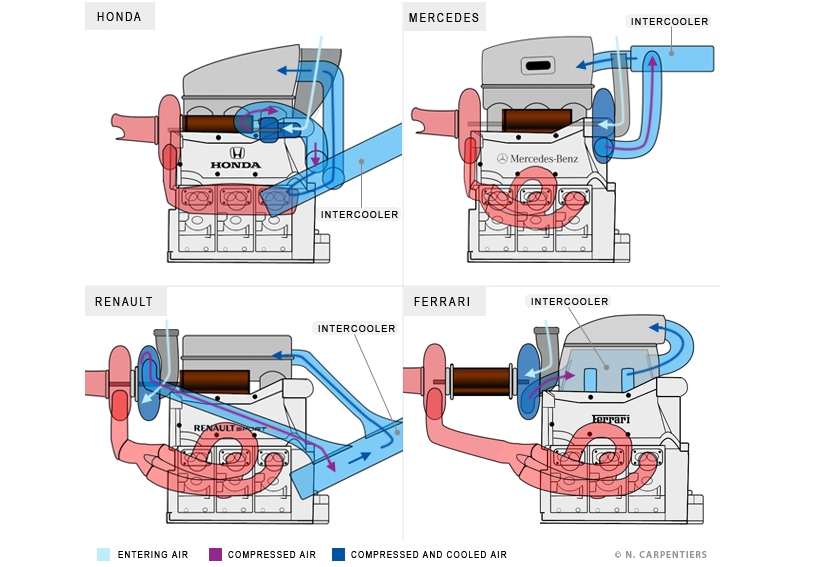
I repeat, we have to be kids and we can not believe everything that is said, we do not know what the rivals have done, but if that is true, it could have remained in power values similar to those of Mercedes and Ferrari at the end of 2018. It is said that these leading teams were at 53CV and 26CV ahead in qualifying and race respectively, so if the improvement is true, in classification they would still be a little behind and more taking into account that they will have improved this year. While in the race, 1CV would be ahead of Mercedes and Ferrari if we take into account last season.
Remember that each manufacturer has chosen somewhat different architectures for their engines, which they are mainly differentiated by the way in which the auxiliary or peripheral elements of the propulsion unit are placed. These architectures have been polishing and changing during these years to improve efficiency, reliability and get more power or better integration with the chassis to promote aerodynamics.We also see from this perspective the halo, which is clean and there are no aerodynamic profiles like last year, is something that we have seen in many teams this year of those presented, only one has decided to mount them. Also last year there were several who resisted to mount this type of profiles.
The rearview mirrors are very interesting, are mounted on the nose in a fairly advanced area and have some long supports in the shape of alar so as not to "destroy" the air that travels backwards. So far everything is more or less normal, but if you notice there is another aerodynamic appendix painted black and anchored on the sidepods and that join with a thin piece to the rear view mirror. Well, obviously this has aerodynamic goals, and it's smart because last year Ferrari tried to experiment with this and assemble aerodynamic parts saying that they were supports for the mirrors and the FIA did not consider it valid. On the other hand, the design of McLaren, being such thin and long supports compared to what is seen in other equipment, it is normal to have vibrations that hinder the vision of the pilots, but by supporting them with that other support that I have cited, the vibration will be less. So the piece would be necessary and legal, and by the way, because you get the double aerodynamic benefit: that of the supports themselves, and that of having the mirror block farther away so that they do not interfere aerodynamically with other elements.
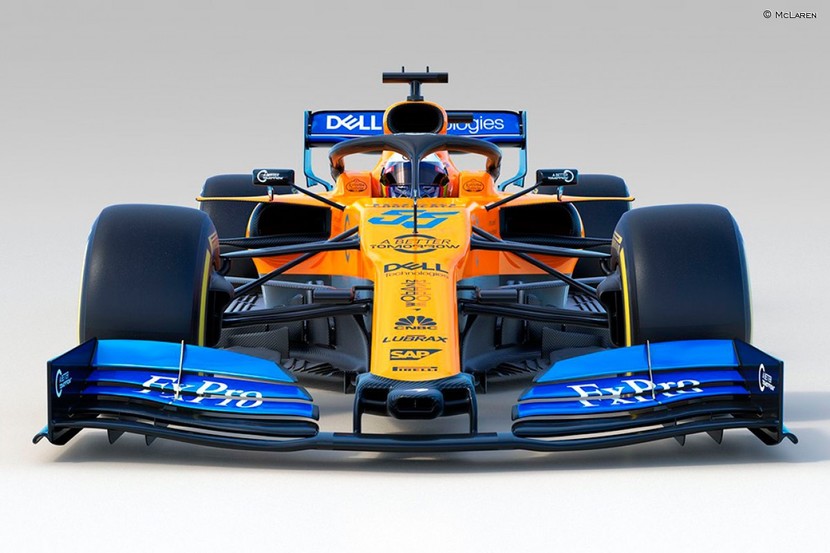
I return to the same image, as there are many more important things to highlight. For example, we go to the middle zone. If you look at that area in the lower part, where the t-tray, the detail it leaves is spectacular, with extreme complexity as is normal in the designs we are seeing. The amount of fiber appendages that are concentrated is extreme and can be seen quite well in this front image. You can also see the pontoons , much smaller and more stylized than last year, where they were large and did not seem to denote a good integration with mechanics. They follow the same philosophy as most of the designs seen this season, elevate them, and leave those channels under them somewhat narrower to evacuate air to the rear area. However, they are not the smallest we have seen ...
Interesting how they have worked this area in Woking , since last year was quite simple, and they have implemented 2 wings horizontal in each sidepod in the purest Red Bull style, one that comes out of the same top plane of the sidepod, and another just from the lower edge of the air intake and that is attached to the lateral aerodynamic profiles hanging from it vertically. These profiles are very similar to those they had last year, so they have continued in the same direction, but this year at least you see much more worked that area.
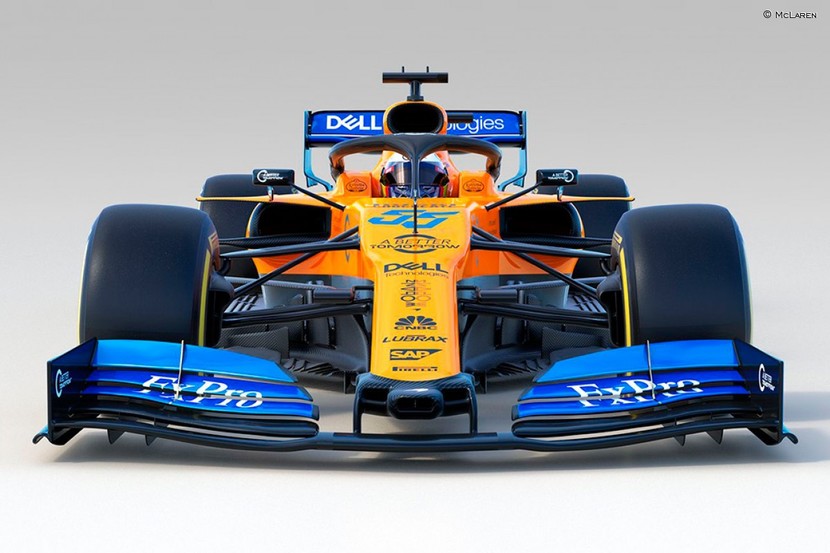
I return to the same photo because I do not want you to miss the details, since there are so many that I need you to have it present one more time. We first removed the front spoiler, which, as is logical, complies with the new technical regulations, with those simple and 5 flat endplates without any profile or flap on them. The main plane has a great curvature on the sides as we have seen in other designs this year, and those two profiles under the wing that seems to be being trend. In this sense, little to note, but we see that el morro is an evolution of the one seen in 2018, with a narrower structure in the Mercedes style, but without those lateral profiles that we saw last year. It also makes a sharp drop just where the suspensions are anchored to lower it as much as possible.Some holes that channel the air back and that are channeled with those side skirts in the Mercedes style. That is, it is a kind of mix, a Frankenstein made with the best of each team and that cost them a lot to implement and make them pass the crash tests.
The brake cooling sockets also have a peculiar shape , with a wider area in the upper area and thinner and narrower in the lower area, splitting the canal into several channels as shown. In addition, we see a bushing or nut that looks like it is hollow in the front wheel, that if it is a blower, it will improve the assembly aerodynamically. But I want to go to another interesting detail, the suspension , and I do not mean the geometry. It is the lower arms, which are grouped in a large arm, a faired piece as did Mercedes. That also leaves the area quite clear, as we also saw in the MCL33.

In this side image you can see those skirts or fiber plate from the side of the nose that "pipes" the air channeled backwards, and those peculiar supports of the front wing that have to accommodate the two channels laterals that we have discussed before. By the way, as you see nothing of the typical slot on the nose for the S-Duct, as it was in the Mercedes or the Red Bull. You can also see the wings of the pontoons and the complexity of the middle area, the nut of the front wheel as I said, and a flat or ground floor very similar to the one that ended last season, with those profiles, sizes and slots in the carbon fiber to signal the bottom, to avoid that the dirty air generated by the rear wheel affects the efficiency of the bottom, etc.
Another very interesting detail that we can see is that carbon fiber arch is so huge that it is on the side of the nose, just behind the front tire and facing the pontoon. Already last year they had it, and this year has something similar to Red Bull, but this year's wing in the MCL34 is even bigger and more striking, and with a clear goal of redirecting the air that comes from the front to the area low of the pontoon. If we also look at the engine cover and the packaging or integration of the Renault engine, it seems to be correct, tighter than last year, although it is not one of the smaller lags we have seen so far.
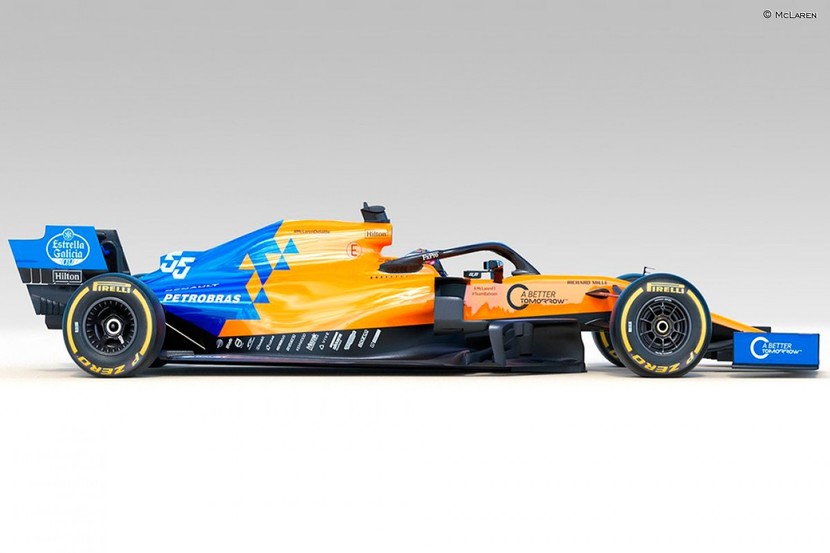
In this side view we continue to be surprised with more details, like that front tire with that bushing that looks like a blower, and that rear tire that has the same grooves that Mercedes used and that this year has also copied Red Bull, and as we can see, also McLaren. It is also impressive to see the almost total absence of shark fin. All the models seen at the moment had it, but it is not like that in the McLaren, which has eradicated it and only has a small wing in the lower area of the engine cover. The shark fin remember that it improves the flow that goes backwards, but that can be detrimental in curves when the air comes from the side, since it destabilizes the rear area by acting as a kind of boat sail that opposes the wind. Very interesting.
Without a doubt the McLaren is the one that is leaving me with an open mouth . If you look at the t-tray area, behind the front axle, we see that the bargeboards form a channel-shaped wall and prevent us from seeing the t-tray from the side. Very interesting also this type of seal, along with that bow that I described before. But there is more, because what about the huge rake? Where is? Well it has disappeared as if by magic, and Mercedes chose not to use that rake so high, and they worked well by lowering the rear axle.We see a very low and almost flat car. Would this be one of the problems of last year for wanting to imitate Red Bull?
Another interesting detail, yes another. It's the zone where the strap is anchored that comes out of the rear suspension, it's the lowest and most advanced I've seen. Red Bull has similar, but I think not so much as in the MCL34. In the MCL33 I did it in a similar way, but I get the feeling that in this it is even longer to reach a more advanced zone. It will be important to see the rear suspension and diffuser in more detail, since the photos do not show well. Already last year they implemented a very innovative rear suspension with those wide fairings, but this year it seems to follow the same philosophy. I hope you have solved the mechanical traction problems too ...
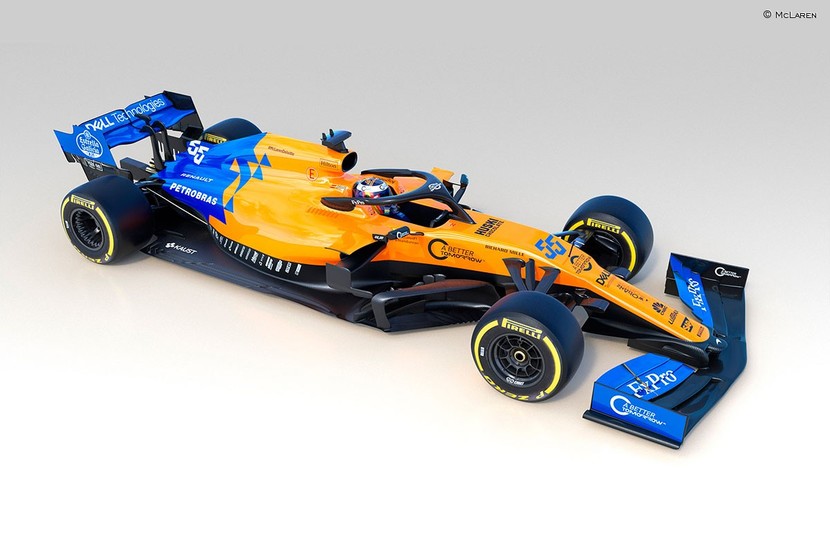
The rear spoiler is also more evolved, with a more curved shape in the central area and that rises with form we approach the lateral endplates. And it is optimistic to see that it is not a great wing like last year, with those problems of lack of grip that forced them to mount high load wings to avoid oversteering. The flap of the DRS also has the typical V or central grimace that we see in many other cars, and we see that there are two central supports instead of one. As for the endplates, the most worked as they have been doing in recent years and have made other teams copy. They present some cuts in two different heights, although they have not created gills as in the case of Williams and others this year.
We can not see the diffuser, but the engine cover seems Very tight in the back area, leaving plenty of room for the air to flow. Also, leave that channel just under the cut where the hot air comes in through the airbox and pontoons to cool. However, I guess it will not be the definitive solution, since in races with more risk of overheating or higher temperatures, always tend to mount more open tops as is logical. By the way, although I have already mentioned it, but I repeat it again, this is just preentations, and many things are hidden or not shown to set them up in the preseason to test them or even during the first races and make a big change in the GP of Spain for the European season, so these designs are not the endings much less, and we may still carry surprises ...
Conclusion, the McLaren is the car that has surprised me most of the presented this year, along with the Mercedes, since the rest of designs have disappointed me enough. Even Red Bull was very consistent, but that does not mean it is not going to work well. It is not a great total revolution, but it is full of many small details that make clear progress. This does not mean anything, but if they have improved what they look like, and the Renault engine also complies, the battle in the Top10 will be of the most interesting for this year.
Happy day of the lovers!
You may be interested

